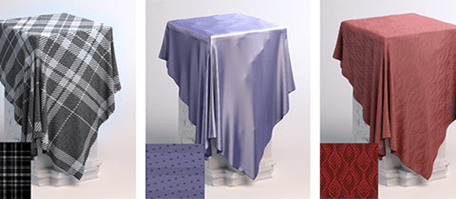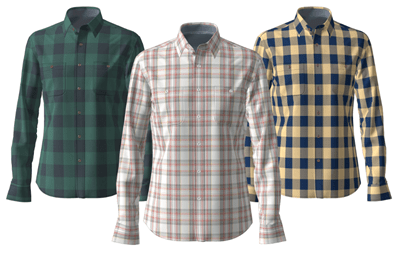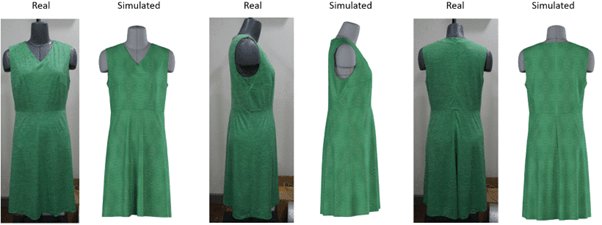The journey to digital fashion has now become a serious chase, be it in manufacturing or in retail. It is critical to understand that digital fashion is much more than digitisation, which is simple conversion of data and processes, commonly referred to as digitalisation wherein there is overall transformation, not just processing changes. Though the urgency is real, there is still information asymmetry on the subject with varying expectations of stakeholders when talking about digitalisation. The above has been well explained in the first two features of the series…check them out on the links below.
Also Read: Digital Fashion (1) – The Chase
Also Read: Digital Fashion (2) – Overcoming the Information Asymmetry
In part 3 of the series, we take the concept a level higher and move on to the solutions that are bringing in the revolution. The first being the advent of avatars which have been game changers in product development and sample approval process.
Although initially the CAD suppliers tried to overemphasise the gain from better marker efficiency, gradually the manufacturers accepted that there are other intangible benefits like time saving, mistake-proofing of missing pieces from marker, etc., and 2D CAD in pattern making/grading/marker making has become a necessity for apparel manufacturers worldwide.
Adding the Third Dimension
The addition of third dimension to pattern making was not easy. The initial solutions were aimed towards changing the fabric design in a garment style by rendering of fabric image. First an image of a person wearing a garment is taken and the fabric design/colour/motif is changed to digitally iterate the fabric design to save time and cost of fabric development. Figure 1(A & B) show just rendering of different fabric types over the same shape (either a table or human body). Note the fold, drape, bulge are exactly the same in all three images. Although it may sound and look simple but sometimes this is unreal.
Figure 1A: Three images with change of fabric design
Figure 1B: Three images with change of fabric design
Before algorithmic simulation of fabric drape was achieved, there was a bit of fooling around by few CAD solution providers by promising incorrect deliverables by software solution during mid ’90s. For example a lady with silk dress was pictured and then a cotton printed poplin fabric was rendered on the same image to project how the lady will look in printed poplin dress. Only later the users realised that drape of silk fabric will be very different from that of poplin and therefore the rendered image (of the poplin dress) will show incorrect look.
Late ’90s saw some hectic development in creating digital avatar by algorithmically simulating the draping of woven fabric using faster computing power. The scientists were able to achieve high accuracy between an image of actual draping of fabric and computer simulated image of draping of virtual fabric. Notable to mention that the rationale behind success was a whole new bunch of measures (properties) of a fabric like thickness, bending rigidity, bending length, formability, extensibility, shear rigidity, expansion, relaxation shrinkage, etc., collectively called fabric objective measurements.
Figure 2: Real and computer simulated image of a garment on a dress form (Source: IEEE Access)
All CAD solution providers added 3D simulation module where 2D patterns were virtually stitched together and draped over a virtual avatar. Stiff pattern images would then turn into soft fabric drape by simply adding some fabric properties.
The Virtual Sample Approval
For long, the notoriously time consuming and iterative process of sample approval was a pain point for apparel manufacturers. Sensing the prospects of virtualising the sample approval process, all CAD solution providers jumped in with 3D simulations. Gerber has come up with 4-hour digital sample approval solution, not to mention the commercialisation of digital textile printing solution coincides with the same time frame starting the longest technological tussle or digital asymmetry in apparel manufacturing.
As the CAD solution providers line up with their 3D simulation solution, the age old sample approval process comes under threat. The traditional sample approval process used to involve live model fit session at the buyer’s office (in Europe and USA) once the physical garment sample used to arrive by courier (from Asian manufacturers). First the naysayers argued that while the 3D simulation process can visually depict the drape, it is unable to indicate the feel of the live model (read tightness and looseness, etc.) The software developers took the challenge in right spirit and soon came up with heap map solution where computer modelling of fabric can indicate the tightness of garment in different zones by changing the colour.
Figure 3: Body heat map in computer simulation
While some of the progressive manufacturers started piloting the virtual solution for their sample approval process, the buyers and conservative fit specialists brought forward a new argument that live model fit session can’t be replicated because while human body is soft and compressible, virtual avatar is non-compressible, hard surfaced and even frictional behaviour between human skin and fabric is non-replicable in the virtual simulation.
Meanwhile the computer graphics was developing at a very fast pace. It is notable to mention the research and development contribution of Prof. Nadia Thalmann in this field simulating realistic virtual humans. Very soon highly realistic virtual human models rapidly became commonplace in many computerised solutions. The rise of avatars in apparel began; these avatars were able to walk, dance, groove complete with realistic dynamic simulations of garment drape. While some CAD suppliers settled with hard body virtual avatars, Tukatech took the soft body challenge to the next level. They created world’s first soft dress form with realistic sagging of breast and even cloned the live fit model by 3D scanning them.
As the technology evolved, the acceptance among manufacturers increased. All the stakeholders realised that virtual sampling and avatars can cut down substantial time from the sample approval cycle if not the final live fit session. As researchers were able to simulate cloth dynamically over body movements, simulation of garments is now possible on an avatar that can not only catwalk (just like live models), but also can jump, run, somersault, dance (while the heat map indicates the tightness and looseness in real time), effectively nullifying the live model fit session.
Figure 4: 3D simulations of live model
While the 3D is being commoditised (Tukatech’s 3D garment library), most of the commercially available solutions that simulate a quilted multi-layered jacket today are a mix of reality and extrapolative guesswork. Figure 4 shows how a multi-layered jacket looks on a live model in comparison to 3D simulation by two commercial solutions available; same jacket, but not quite similar! We need the last hurdle to be crossed, that is the simulation of elasticated fabric and multi-layered garment.
In contrast to the decade old traditional practice of 2D to 3D solution in a design-make-sell environment, the current on-demand manufacturing scenario expects 3D to 2D approach where the process goes like sell-design-make. In my next part of the series, When Avatars Precedes the Real, I will discuss how newer players like TrapDoor Creative, VNTANA, ExactFlat, StyleScan, Bold Metrics, Perfitly and others are addressing the issue from 3D to 2D armed with latest technology, as a whole new ball game. Stay tuned ….




